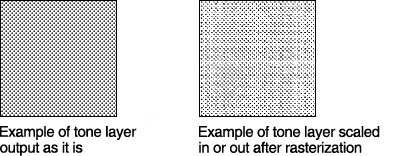
Add Rim Light around the edges of the figure.The brush should be touching one edge of the marquee, but the fade should not touch the opposite end.Make a selection with the lasso tool, and use a soft brush to paint inside that area.Use the “Lasso Cut and Gradient” method to color sharp, high-contrast areas.Always be mindful of the direction and color of the lighting.We will be painting over top of the shadows.Merge the Multiply Shadows layer down with the color layer.The highlights and rim lights will do the final rendering, and help tell the viewer what to look at.

The illustration at this point should look rendered, but a little dull and desaturated and a bit flat.Use hard-edged brushes when cast shadows are more intense.Just paint in some of the midtones – let the line-art do the work for you and just compliment it. Don’t introduce a lot of rendering information at this point.Follow the lineart, and add volume to the forms by hugging the edges with your brush.Paint with a very desaturated, light value purple/blue color to paint the hard shadows.Set new layer above Colors layer, and set to Multiply.I like to use a soft brush with a little texture in it, so that the color transition blends look more natural.Use a large soft brush or the gradient tool to put in large color transitions in the piece.Put in large gradient color fades to areas that fade from one color to another.Local Colors will still be influenced by the color of the lighting, but identifying them early can help calibrate the color balance of your piece. Objects with a Local Colors are things such as an apple, which is generally accepted to be red when shown in white light. I used my custom textured watercolor brushes to fill in the background quickly.It’s important to block them in, because it sets the tone and contrast for the figure.Color in background with a solid color behind all other layers.You don’t want the random colors you used for Flatting to distract you.Usually I like to use a desaturated blue with a neutral value.

Fill the Colors layer with one solid color.Make sure Lock Transparency is turned on to prevent you from painting outside of the layer area and onto the background.Duplicate your Flats Layer and name it Colors (this is the layer you actually paint on), and keep it below your Line Art layer.Resize your main illustraiton to 300 dpi (previously set at 600 dpi for inking).This will now be a handy pallette you can use when coloring the real thing.Load the color scheme into Clip Studio Paint’s SubView pallette.Once you’re happy with a color scheme, save the document as a flat jpg.




 0 kommentar(er)
0 kommentar(er)
